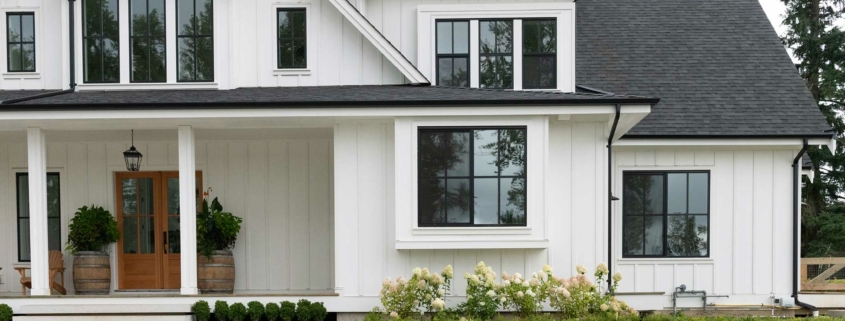How Are Replacement Windows Installed?
Windows are essential to any home, providing natural light, ventilation, and protection from the elements. Over time, however, windows can become worn out, damaged, or outdated. When this happens, it may be necessary to replace them. Understanding the window replacement process can help homeowners make informed decisions and ensure a successful installation. This article will guide you through each step of the installation process, from understanding the basics to post-installation procedures and maintenance tips.
Understanding the Basics of Window Replacement
Window replacement is not just about aesthetics but is also vital in energy efficiency, comfort, and security. Old or poorly functioning windows can lead to drafts, moisture intrusion, and higher energy bills. Replacement windows are designed to solve these problems by offering better insulation, improved durability, and enhanced curb appeal.
There are several important factors to consider when it comes to window replacement. The type of window, the materials used, and the installation process all play a role in determining the overall effectiveness and longevity of the replacement windows.
The Importance of Window Replacement
One of the primary reasons for window replacement is energy efficiency. Older windows often lack the insulation properties of modern designs, resulting in significant heat loss during the winter and unwanted heat gain during the summer. This increases reliance on heating and cooling systems, increasing energy costs. New replacement windows with advanced glass technology and proper installation can help to solve this problem, making your home more comfortable and reducing energy consumption.
In addition to energy efficiency, window replacement also improves the overall comfort of your home. Drafts and air leaks can create uneven temperatures and discomfort in certain areas of your house. You can eliminate these issues by replacing old windows and creating a more consistent and pleasant indoor environment.
Furthermore, window replacement enhances the security of your home. Older windows may have worn-out locks or be more susceptible to break-ins. Replacement windows often come with advanced locking mechanisms and reinforced glass, protecting against intruders.
Types of Replacement Windows
Before diving into the installation process, it’s important to understand the different types of replacement windows available. The most common options include double-hung windows, casement windows, sliding windows, awning windows, and picture windows. Each type offers unique benefits in terms of functionality, aesthetics, and maintenance requirements. Consider your specific needs and preferences when choosing the right replacement window for your home.
- Double-hung windows are a popular choice due to their versatility and classic design. They consist of two sashes that can be opened from the top and bottom, allowing for improved ventilation and easy cleaning.
- On the other hand, casement windows are hinged on one side and open outward like a door. They provide excellent airflow and unobstructed views, making them ideal for rooms that require maximum ventilation.
- Sliding windows operate horizontally, with one sash sliding over the other. They are known for their ease of use and space-saving design, making them a great option for smaller rooms or areas with limited clearance.
- Awning windows are hinged at the top and open outward, creating an awning-like effect. They are perfect for areas that require ventilation, even during light rain, as the design prevents water from entering the room.
- Picture windows are fixed and do not open. They are designed to provide expansive views and allow natural light to flood the room. Picture windows are often combined with other window types to create a visually appealing and functional arrangement.
When selecting replacement windows, it’s important to consider factors such as energy efficiency, maintenance requirements, and the architectural style of your home. Consulting with a professional can help you make an informed decision and ensure the replacement windows meet your needs.
Pre-Installation Process for Replacement Windows
Before the installation takes place, a few essential steps need to be followed to ensure a seamless process.
Choosing the Right Replacement Window
The first step is to select the right replacement window for your home. Consider factors such as the style, material, energy efficiency ratings, and warranty. Consulting with window professionals or doing thorough research can help you make an informed decision.
Measuring for Replacement Windows
Accurate measurements are crucial for a successful window replacement. Measure the width, height, and depth of the existing window opening carefully. Take measurements at multiple points to account for any irregularities. Use these measurements to order the correctly sized replacement windows.
The Step-by-Step Installation Process
Now that you have selected the right replacement windows and taken accurate measurements, it’s time to move on to the installation process.
Removing the Old Window
The first step in replacing a window is removing the old one. Start by carefully removing the glass and frame. Use caution to avoid any damage to the surrounding walls or other components. The old window can be safely lifted out of the opening with the trim and hardware removed.
Preparing the Window Opening
With the old window removed, it’s time to prepare the window opening for the new installation. Clean the opening thoroughly, removing any debris or old caulking. Check for any signs of rot or damage and make necessary repairs. This is also a good time to apply weather-resistant barriers or insulation to improve energy efficiency.
Installing the New Window
With the window opening prepared, carefully place the new replacement window in position. Ensure it is level, plumb, and square, using shims if necessary. Once the window is properly positioned, secure it in place using screws or nails. Install the interior trim and test the operation of the window to ensure it opens and closes smoothly.
Post-Installation Procedures
After the replacement window is installed, there are a few essential post-installation procedures to complete.
Checking the Installation
Take the time to thoroughly inspect the installation for any signs of gaps, leaks, or improper sealing. Check that the window operates smoothly and locks securely. Any issues should be addressed promptly to ensure optimal performance and energy efficiency.
Sealing and Insulation
A critical step in post-installation is sealing and insulating around the window. Apply a high-quality caulking sealant to fill gaps between the window frame and the wall. This helps to prevent air and water infiltration, ensuring maximum energy efficiency and protection against the elements.
In closing
Installing replacement windows is a meticulous process involving several important steps. Understanding the basics, choosing the right window type, taking accurate measurements, following the installation process carefully, and performing post-installation procedures and regular maintenance all contribute to a successful window replacement. By following these guidelines, you can ensure that your replacement windows are installed correctly, providing enhanced energy efficiency, comfort, and aesthetics for years to come.
Window Depot USA of Tyler, TX, combines premium grade replacement window products with factory-direct pricing, a Transferable Lifetime Limited Warranty, and professional, courteous installation to offer the very best value in the industry today! Call us at (903) 752-0449 for a free, no-obligation quote, and find out firsthand what sets Window Depot of Tyler, TX, apart from the rest of the crowd. We’d be honored by the opportunity to earn your business!
Our service area includes the following towns: Tyler, Whitehouse, Bullard, Lindale, Chandler, Canton, Mineola, Longview, Kilgore, Henderson, Gilmer, Gladewater, Marshall, Hallsville, and Palestine.









